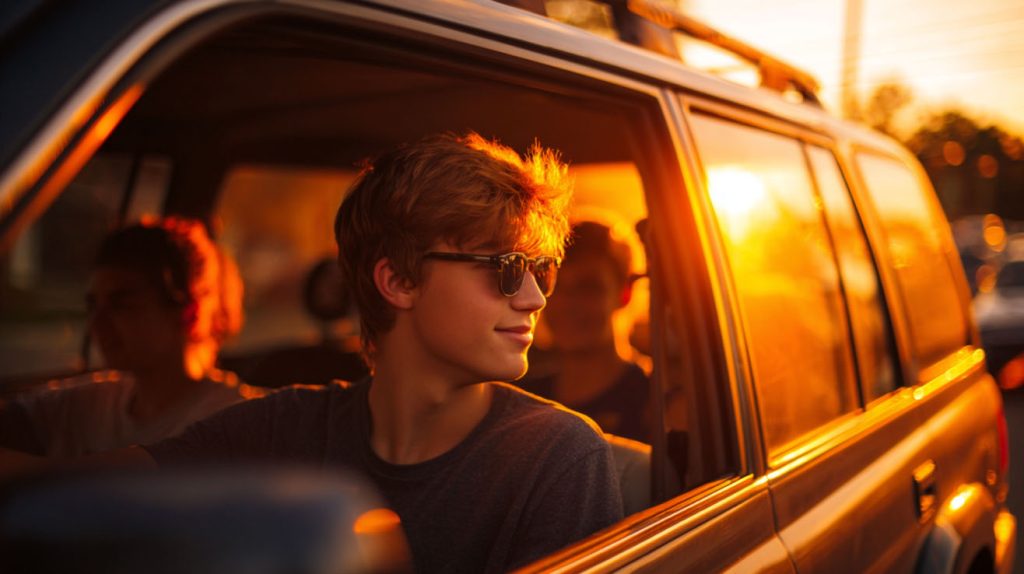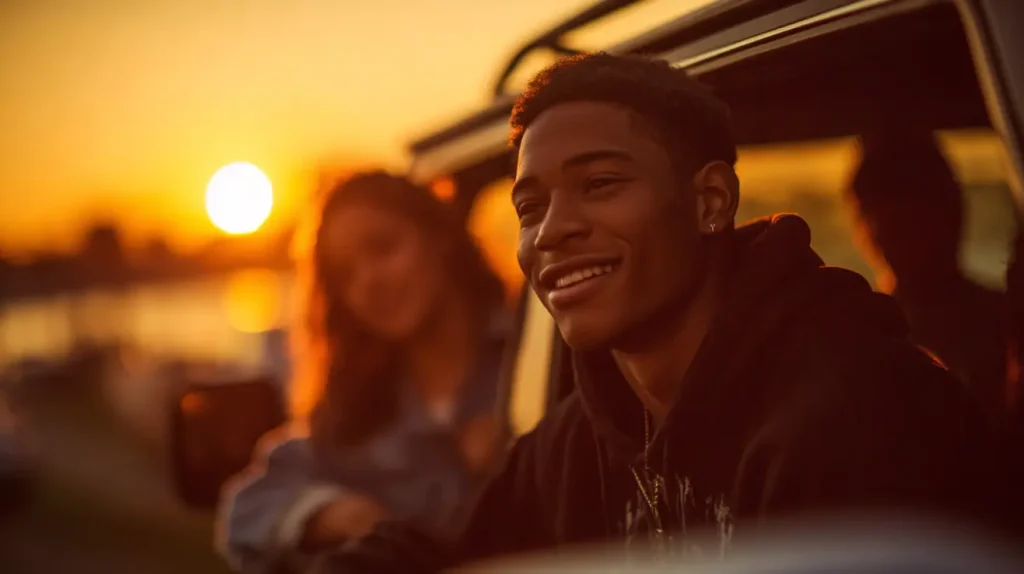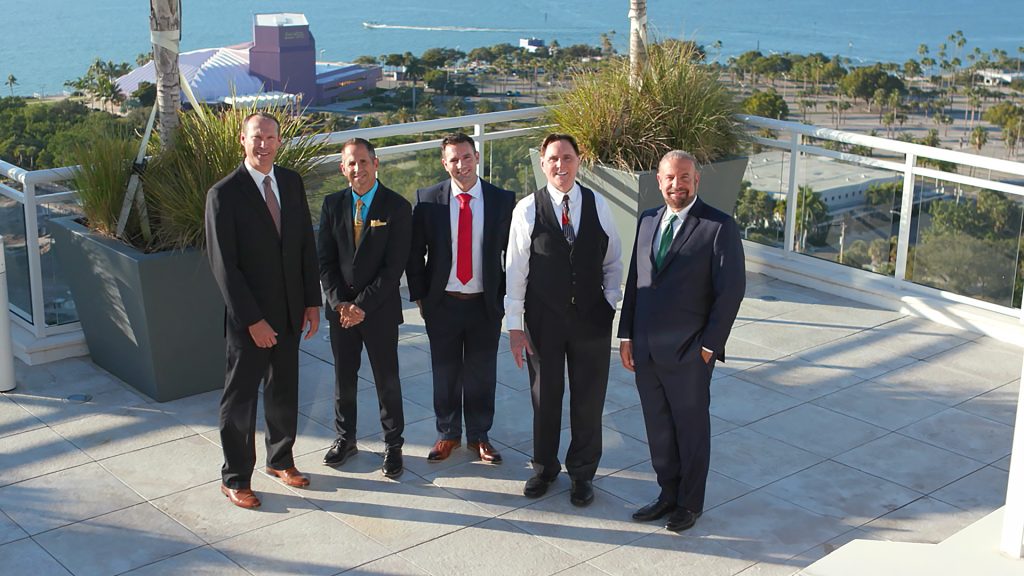Summer vacation in Sarasota, Florida should be a time of fun and freedom for teenagers. Unfortunately, the warmer months also bring a heightened risk of car accidents involving teen drivers on Sarasota’s roads. In fact, the period between Memorial Day and Labor Day is often called the “100 Deadliest Days” for teen drivers due to a sharp increase in crashes and fatalities. Car accidents are the leading cause of death for U.S. teens age 15-20, with roughly 2,500 teens killed and 285,000 injured in crashes each year (about seven teen fatalities every day). Sarasota has seen firsthand the tragic consequences – in one recent case, a 16-year-old driver ran a stop sign and caused a T-bone collision that seriously injured six local teenagers. At the law firm of Goldman, Babboni, Fernandez, Murphy & Walsh we will examine why summer is especially dangerous for teen drivers in Sarasota, the legal implications of teen-involved accidents under Florida law, and actionable steps for prevention and protecting your rights. It also highlights how the experienced Sarasota car accident attorneys at Goldman, Babboni, Fernandez, Murphy & Walsh (Justice Pays) are committed to helping victims of teen driver accidents seek justice.

Why Summer Is Especially Dangerous for Sarasota Teen Drivers
Sarasota’s summer months combine several factors that elevate the accident risk for teenage drivers. Teens are out of school and driving more frequently for social outings, beach trips, and summer jobs. Tourists flock to popular Sarasota destinations (from Siesta Key Beach to St. Armands Circle), increasing traffic congestion and bringing together inexperienced local teen drivers and out-of-town drivers unfamiliar with area roads. Daily afternoon thunderstorms common in Florida summers can suddenly drench roads and reduce visibility, creating hazardous conditions that are challenging even for experienced drivers. Unfortunately, novice teen motorists often underestimate these dangers or overestimate their own driving abilities. As a result, summer has earned its reputation as the most dangerous season for teen drivers, with a 30% increase in fatal crashes involving teens compared to the rest of the year.
The “100 Deadliest Days” of Summer for Teen Drivers
Nationwide, the period from Memorial Day to Labor Day – when teens are on summer break – sees a dramatic spike in serious crashes involving teenage drivers. AAA has dubbed this stretch the “100 Deadliest Days” because an average of 8 people are killed each day in teen driver crashes during summer (versus ~7 per day during the school year)2. More than 30% of all teen-driver-related traffic deaths occur in these summer months. In Florida alone there are over 456,000 teen drivers on the road, and in 2023 they were involved in nearly 20,000 crashes, causing over 3,000 injuries and 83 deaths statewide. With so many young drivers hitting Sarasota’s streets in summertime, the risks are compounded.
What makes summer particularly perilous for Sarasota teens? Lack of experience is a baseline issue – new teen drivers (16-17) are almost three times more likely to be involved in a fatal crash than adults. But summer freedom often leads to specific high-risk behaviors behind the wheel:

Worried About Your Teen Driving in Sarasota? Here’s What Causes Most Accidents
- Driving Distracted: Distraction is the number one cause of teen crashes. Nearly 6 out of 10 crashes involving teen drivers involve some form of distraction. Often it’s texting or using a smartphone, but even lively conversations with friends can divert a teen’s attention. In fact, teen passengers are the leading distraction for young drivers (ahead of cell phones). Taking eyes off the road for just a few seconds to read a text or interact with friends can be deadly. Florida law now bans texting while driving for all ages, and teens should use “Do Not Disturb” modes or apps to block notifications when behind the wheel.
- Speeding and Reckless Driving: Excessive speed is a factor in almost 30% of fatal crashes involving teens. Whether from running late or thrill-seeking, teens are more prone to speed and drive too fast for road conditions, especially on Sarasota’s open highways like I-75 or rural stretches. Florida data shows unlawful speeding is the most common traffic citation issued to teen drivers. This was evident in a recent Sarasota crash where a teen driver failed to stop at a stop sign – a form of reckless disregard that led to devastating consequences.
- Multiple Teen Passengers: Piling friends into the car is a tempting freedom of summer, but it sharply raises the risk of a crash. Studies show that the risk of a fatal accident increases with each additional teen passenger in the vehicle. A single teenage passenger can make a teen driver 2.5 times more likely to engage in risky behavior; with multiple teen passengers, they are 3 times more likely to drive dangerously. The energy and peer pressure from friends can encourage speeding, showing off, or distraction. Florida’s Graduated Driver Licensing rules try to limit underage passengers, but these rules are often stretched or ignored during summer outings.
- Not Wearing Seat Belts: Teens and their passengers sometimes neglect seat belts, with tragic outcomes. About 1 in 3 teenagers killed or seriously injured in crashes weren’t buckled up. Seat belts are a teen driver’s last line of defense – wearing one reduces the risk of fatal injury by 45% – yet some teens feel invincible or find them uncool. In a deadly Sarasota wreck in 2023, an 18-year-old driver who crashed into a tree had her seat belt on (and sadly did not survive), while her 16-year-old passenger who was not belted was ejected and seriously injured. This heartbreaking example shows that every occupant must buckle up, every ride.
- Nighttime Driving: Summer means no school the next day, and many teens stay out late at night for parties or driving around. Driving in the dark is inherently more dangerous (reduced visibility, more drunk drivers on the road, etc.), and late-night driving requires extra skill. AAA notes that speeding and driving at night are major contributors to teen crashes during the 100 Deadliest Days. Unfortunately, many teens push their limits with midnight drives on Sarasota’s roads or highways. Florida’s graduated license law sets a 11 p.m. curfew for 16-year-olds (and 1 a.m. for 17-year-olds) unless accompanied by an adult, but these rules are sometimes broken or teens find themselves rushing home before curfew and take risks.
- Impaired or Drowsy Driving: Summer celebrations like graduation parties or July 4th bring opportunities for underage drinking or drug use, which can lead to impaired driving. Even though Florida enforces a zero-tolerance law for under-21 DUI (any BAC ≥ 0.02% results in an immediate 6-month license suspension), some teens still make the dangerous choice to drive under the influence. Others may simply drive while extremely fatigued – after a long day at the beach or an all-night hangout. Both alcohol impairment and drowsiness dull reaction times and decision-making similar to adult DUIs. A momentary lapse can cause a high-speed wreck or head-on collision. For example, in a late-night Sarasota crash, a fatigued teen driver lost control around 1:30 a.m., crashing into a tree and killing one passenger.
- Weather and Road Conditions: Florida’s summer storms can test any driver’s abilities. Around Sarasota, sudden torrential rain can create slick roads and flash flooding. Low visibility from heavy rain contributed to a 50-car pileup on I-75 in Florida last year. Inexperienced teens may not slow down enough or know how to handle hydroplaning. Combined with tourist drivers unfamiliar with local roads, these conditions lead to a spike in accidents during afternoon downpours. Sarasota’s coastal routes also mean glare from the sun at dawn and dusk, which can be blinding if a driver isn’t prepared. In short, summer weather can turn dangerous quickly. Teens must learn to drive defensively and adjust to changing conditions – otherwise, a routine trip can end in a crash.
These risk factors often compound each other. A scenario all too common in Sarasota: a 16-year-old piles four friends into the car for a night out, none wearing seat belts. On the way back, the teen driver speeds to make it home by midnight, glances at a buzzing phone, and in a split second misses a stop sign – resulting in a violent collision. This hypothetical is essentially what happened in the July 2024 Sarasota crash that put six teens in the hospital. As Florida Highway Patrol Trooper observed, once a teen takes the wheel, “even a small mistake can turn deadly”. For first responders, it’s extremely difficult arriving at a crash scene where all the victims are kids “the ages of our own children”. The consequences of a teen’s split-second error can be lifelong and devastating for multiple families.

What Happens Legally When a Teen Driver Causes a Crash in Florida?
When a crash involves a teen driver, the legal situation can quickly get complicated. Whether your teen was injured or you’re the one who was hit, Florida law applies special rules to accidents involving minors. From parental liability to insurance coverage gaps, understanding these laws is essential for protecting your rights — or your child’s.At Goldman, Babboni, Fernandez, Murphy & Walsh, we’ve helped Sarasota families navigate exactly these cases — and we know what to look for when teens are involved.Here’s what you need to know:
Parental Responsibility for Teen Drivers (Florida’s “Dangerous Instrumentality” Rule)
In Florida, parents can be held liable if their minor child causes a car accident. This may surprise some, but it stems from two legal concepts: the Parental Consent law for driver licensing and Florida’s “dangerous instrumentality” doctrine. Essentially, when a parent allows a teenager to drive – especially if the teen is driving the parent’s vehicle – the parent is accepting responsibility for that teen’s actions on the road.
- Signing a Teen’s License = Assuming Liability: Florida requires a parent or guardian to sign the driver’s license application for any driver under 18. By signing, the parent is legally vouching for the teen and agrees to bear financial responsibility for any negligence by that young driver9. This is not just a bureaucratic formality – it has real consequences. The parent’s responsibility remains in effect until the child turns 18 (unless the parent formally withdraws consent and cancels the license). So if a 17-year-old causes a crash in Sarasota, the injured victims can pursue claims against the parent who signed for that license, not just the teen. (It is possible for a parent to revoke their consent and have a minor’s license suspended, but few do this unless the teen has proven to be extremely unsafe.)
- Vehicle Owner Liability (Dangerous Instrumentality): Florida is one of the few states with the dangerous instrumentality doctrine – it treats automobiles as inherently dangerous objects. Under this doctrine, the owner of a vehicle is vicariously liable for any negligent driving of that vehicle by someone who had the owner’s permission to drive. In practice, this means if a teenager is driving the parents’ car, the parent (as the vehicle owner) will almost certainly be held financially liable for damages caused by the teen. It doesn’t matter if the parent was nowhere near the accident; as long as the teen had general permission to use the car, the parent/owner is on the hook. Even if a teenager took the car without explicit permission, parents may still be liable since they are the vehicle’s owner and gave the teen access to driving in the first place. In short, when a minor behind the wheel causes harm, Florida law typically shifts the liability onto the parent or vehicle owner.
- No “Family Purpose” Immunity: In some states, parents aren’t liable for a child’s negligence except under specific “family purpose” rules. Florida, however, explicitly makes car accidents an exception to the general rule that a child’s negligence is not imputed to the parent. Through the licensing consent and dangerous instrumentality laws, Florida ensures victims can seek compensation from a responsible adult’s insurance rather than being limited to a teen’s often minimal assets. Practically, this means the claim for damages will target the auto insurance policy of the parent/owner. Florida requires drivers to carry insurance, and most parents list their teen drivers on the family auto policy. If an accident’s costs exceed the insurance coverage, the injured party could even pursue the parents’ personal assets (though large judgments beyond insurance are less common and can be limited by homestead protection and other laws).
- Negligent Entrustment: In egregious cases, a parent might also be independently liable under negligent entrustment – this is when a parent knowingly lets a teen drive even when the teen has a track record of reckless behavior or a condition that makes them unsafe. For example, if a Sarasota parent knows their 17-year-old habitually drinks and drives or has multiple prior accidents, yet still hands over the keys, that parent could be deemed directly negligent in entrusting the vehicle to the teen. This could lead to damages beyond just vicarious liability. However, most teen accident claims in Florida will simply rely on the automatic owner liability described above, without needing to prove the parent was “negligent” in allowing the teen to drive.
If you, or your teen are injured by a teen driver in Sarasota, you are not limited to the teen’s meager resources. You can hold the parents accountable via their insurance. Similarly, parents of at-fault teen drivers should be aware that your insurance will be the primary source of victim compensation. This is why it’s critical to carry adequate liability coverage if you have a young driver in the household. A serious accident with multiple injuries (not uncommon in a teen-packed car) can easily cause damages that run into hundreds of thousands of dollars.
Florida’s No-Fault Insurance and Accident Claims Involving Teens
Florida operates under a no-fault auto insurance system, which affects how any car accident victim (teen or adult) can pursue compensation. “No-fault” means that after a crash, each driver’s own insurance typically pays for their medical bills and lost wages, regardless of who caused the accident. All Florida drivers (or vehicle owners) must carry Personal Injury Protection (PIP) coverage of at least $10,000. Here’s how these rules play into teen accident scenarios:
- Personal Injury Protection (PIP): If a teen driver or teen passenger is injured in a crash, their first source of coverage is usually PIP benefits from their own (or their parent’s) auto insurance policy. PIP will pay 80% of necessary medical expenses and 60% of lost income up to $10,000 per person. This is true no matter who was at fault for the accident. For example, if a Sarasota teen is hurt when another car runs a red light, that teen’s medical bills will initially be covered by the family’s PIP insurance, even though the other driver caused the crash. The goal is to get injured people at least some immediate coverage for treatment without delays due to fault investigations.
- PIP Limitations: PIP in Florida has limits – it does not cover pain and suffering or other non-economic damages. Also, the full $10,000 is only available for emergency medical conditions; if the injuries are not deemed an “emergency,” PIP maxes out at $2,500. Many serious accidents easily exhaust the $10k limit (Florida medical costs are high). That’s where claims against the at-fault party come in.
- Serious Injury Threshold: Florida law allows accident victims to step outside the no-fault system and file a liability claim or lawsuit against the at-fault driver if their injuries meet certain severity criteria. Generally, “serious injuries” – significant or permanent injury, scarring, disfigurement, or death – permit you to pursue damages beyond what PIP pays. In fatal accidents or crashes causing broken bones, head trauma, or other major injuries (sadly common in high-speed teen accidents), victims and their families can absolutely seek full compensation from the at-fault driver’s insurance. In practice, this means if a teen driver in Sarasota negligently injures someone, that victim can sue the teen (and by extension the teen’s parents/insurance) for damages like pain and suffering, unpaid medical bills, and other losses. Likewise, if your teenage son or daughter is badly injured by another driver’s negligence, you can pursue a claim against the at-fault party once the injury crosses the threshold.
- Liability for Passengers: What if a teen is injured as a passenger in a car? Say, your 16-year-old is riding with a friend who crashes, or your teen has friends in their car when they crash. Florida law gives passengers the right to compensation from whoever was negligent. If a teen’s peer was driving recklessly, the injured passenger (through their parents) can file a claim against that teen driver’s auto insurance (which, as discussed, will hit the vehicle owner’s policy – likely the friend’s parents) to cover injuries. If another vehicle’s driver caused the crash, the claim would target that driver. Either way, minor passengers have the same rights to injury compensation as adult passengers. A teen victim can recover for medical expenses, pain and suffering, etc., just like any other person would. The difference is procedural: minors cannot file legal claims on their own, so a parent or guardian must initiate the lawsuit or insurance claim on the child’s behalf. The parent essentially acts as the representative to ensure the teen’s rights are protected and that any settlement is used in the child’s best interest. (Florida law allows a minor to wait until age 18 to file a lawsuit on their own, but the standard statute of limitations – two years for injury cases – still applies. In almost all cases, it’s better for the parents to move forward with a claim rather than delay.)
- Insurance Challenges: Dealing with insurance companies after a teen driver accident can be tricky. If the teen is at fault, the family’s insurance might try to settle claims quickly (sometimes for less than full value) to close the case. If another driver is at fault, their insurer may dispute liability, especially if they see an inexperienced teen on the other side. For example, an insurer might argue that your teen driver was partially to blame due to inexperience or a traffic mistake, even if the other driver was mostly at fault – Florida follows a comparative negligence rule, meaning a victim’s compensation can be reduced if they were partially responsible. It often takes a skilled attorney to push back and prove exactly what happened. Accident reconstruction may be needed, along with analysis of black box data, cell phone records (to see if the teen was texting), and other evidence when fault is contested. There may also be multiple insurance policies involved – for instance, if a teen is driving a friend’s car, the vehicle owner’s insurance and the teen’s own family insurance could both provide coverage. All these issues underscore the importance of having legal guidance after a serious teen-involved crash.
Key takeaway: A teen driver accident in Sarasota is not legally much different from any car accident – injured victims have the right to recover damages once serious injury is shown. The presence of a minor just means the claim will involve the parents and the family’s insurance more directly. Victims should know that Florida’s parental liability laws ensure there is usually an insured source of recovery (the parent’s policy), and Florida’s no-fault/PIP coverage can provide some immediate benefits. However, to navigate the process – from PIP filings to potentially suing for full damages – it’s wise to consult with a Florida personal injury attorney experienced in teen accident cases. This is where Justice Pays comes in, to help families understand their rights and pursue justice after these traumatic events.

🚘 How Sarasota Teens Can Stay Safe Behind the Wheel This Summer
Preventing teen car accidents is a responsibility shared by teenagers, parents, and the community. While you can’t eliminate every risk, there are concrete steps that Sarasota teens and their parents can take to significantly reduce the chance of a crash. Below are some important summer driving safety tips and best practices:
✅ Buckle Up Every Time
- Florida law requires seat belts for all front-seat passengers and anyone under 18 — but wear it because it saves lives, not just because it’s the law.
- Never carry more passengers than seat belts.
- In a crash, an unbuckled passenger can become a deadly projectile.
👥 Limit Passengers and Distractions
- Florida’s graduated license rules restrict teen passengers for good reason — more people means more distractions.
- Drive solo or with one trusted passenger until you gain experience.
- Use “Do Not Disturb While Driving” mode on your phone and avoid eating, adjusting GPS, or blasting music behind the wheel.
🚦 Obey Speed Limits and Traffic Laws
- Speeding, rolling through stop signs, and aggressive driving are top causes of teen crashes — and they’re heavily ticketed in Sarasota.
- Defensive driving means expecting the unexpected: leave space, stay calm, and don’t follow the crowd if traffic around you is speeding.
🚫 Never Drive Impaired — or Exhausted
- Florida has zero tolerance for teen DUI: even a .02% BAC can result in a 6-month license suspension.
- Don’t drive tired — fatigue can be as dangerous as alcohol.
- Never get in the car with a driver who’s been drinking or using drugs. Call a parent, Uber, or rideshare.
🌙 Avoid Night Driving
- Crash risk for teens skyrockets after dark. Depth perception, visibility, and reaction time are all reduced.
- Florida curfews:
- 16-year-olds: No driving after 11 p.m.
- 17-year-olds: No driving after 1 a.m.
- Exceptions only apply when accompanied by a licensed adult or driving to/from work.
🌧️ Drive Cautiously in Bad Weather
- Summer storms are fast and fierce in Sarasota. Slow down in rain, increase following distance, and pull over if visibility drops.
- Avoid standing water, use headlights, and watch for hydroplaning.
- Watch for glare at sunrise/sunset, and be extra alert in beach zones where tourists and pedestrians cross unexpectedly.
Safety is a habit, not a one-time choice. Sarasota’s roads demand focus, patience, and responsibility — especially from young drivers still gaining experience.
After any accident: first ensure everyone’s safety and call 911 immediately. Even if the crash seems minor, get the police and paramedics on the scene – injuries might not be obvious right away, and having an official accident report will be important later. Seek medical evaluation for all involved (especially teens, who might downplay injuries). Exchange information with the other driver, but do not admit fault or blame in the heat of the moment. If possible, take photos of the damage, skid marks, and scene. Once immediate needs are handled, notify your insurance company of the accident. Parents should be involved in all of this if a minor teen driver is in a crash – make sure your teen knows to call you right after calling 911. After urgent concerns, it’s wise to consult a qualified Sarasota car accident attorney to understand your rights and what steps to take, especially if there are injuries. Florida law requires certain forms to be filed and claims to be handled promptly, so guidance from a lawyer can be invaluable. In the next section, we’ll discuss how the legal team at Goldman Babboni Fernandez Murphy & Walsh can assist families in the aftermath of a teen driver accident.

Justice for Victims: How Goldman Babboni Fernandez Murphy & Walsh (Justice Pays) Can Help
A serious auto accident involving a teen driver can upend a family’s life. In the wake of a crash, victims and parents often feel overwhelmed – dealing with hospital bills, insurance adjusters, police reports, and the emotional trauma. This is where the experienced Sarasota personal injury attorneys at Goldman Babboni Fernandez Murphy & Walsh (known locally as Justice Pays) step in to provide guidance, advocacy, and hope. Our law firm has represented countless accident victims across Sarasota and Southwest Florida, including many cases involving teen drivers, and we are committed to securing justice for those injured due to negligence.
Why choose Justice Pays for a teen accident case? Here are some key ways our firm can assist you after a crash:
🕵️♂️ We Investigate Thoroughly
Go beyond the police report to uncover fault
Examine phone records, video footage, and black box data
Preserve evidence before it disappears
Example: We’ve used traffic camera footage to prove fault and shut down attempts to blame innocent victims — even in complex teen driver cases.
📞 We Deal With Insurance So You Don’t Have To
Handle all communications with adjusters
Push back against lowball offers or blame-shifting
Protect you or your teen from signing away rights too soon
💵 We Maximize Compensation
Work with medical and economic experts to document:
Future care needs
Lost wages or earning potential
Pain, suffering, and emotional distress
File wrongful death claims if tragedy strikes
We don’t let insurance companies undervalue injuries just because the victim is young.
👨👩⚖️ We Guide You Through Every Step
Explain your rights in plain English
Handle court approvals and fund preservation for minors
Help you access trusted medical care if needed
💚 No Fees Unless We Win
You pay nothing upfront — our fee comes from your recovery
The initial consultation is 100% free
Our team is motivated to win because your success is our success
Whether you or your child was injured by a teen driver — or your teen was hurt in a crash — our Sarasota attorneys are here to fight for justice. Because when you’re hurting, Justice Pays.
If you or your teenager has been involved in a serious accident this summer, don’t navigate the aftermath alone. The lawyers of Goldman Babboni Fernandez Murphy & Walsh are here to answer your questions and fight for your rights. Our Sarasota office (located at 2822 University Parkway, Sarasota, FL) is available 24/7, and we can also come to you if needed. Consultations are free, and we’ll give you an honest evaluation of your case and legal options.
Stay Safe, Sarasota – And Know We’re Here to Help
Summer in Sarasota is a wonderful time, full of opportunities and new experiences for our youth. By understanding the unique risks that teen drivers face during these months and taking proactive safety measures, families can greatly reduce the chance of accidents. Education, supervision, and smart choices behind the wheel save lives. We urge all Sarasota parents to talk openly with their teens about safe driving, and for teens to remember that driving comes with serious responsibility. A split-second mistake on the road can have lifelong consequences – as evidenced by the heartbreaking crashes that have occurred in our community. However, if a tragedy does strike, know that you are not alone. Florida law provides avenues for justice, and the team at Goldman Babboni Fernandez Murphy & Walsh is ready to help you pursue them.
Our firm is deeply committed to the Sarasota community and to protecting the rights of accident victims. We believe that through diligent legal work, justice truly pays – it can provide the financial support needed for recovery and hold negligent parties accountable. If your family has been affected by a teen driver accident this summer, reach out to us for caring, knowledgeable counsel. We will stand by your side and do everything in our power to secure the compensation and justice you deserve. Stay safe on the roads this summer, and remember that help is just a phone call away should you ever need it. Together, we can work to make Sarasota’s streets safer for our teens and for everyone.
The post Is Your Teen Driving This Summer in Sarasota? Know the Risks and Legal Liability appeared first on Justice Pays.




